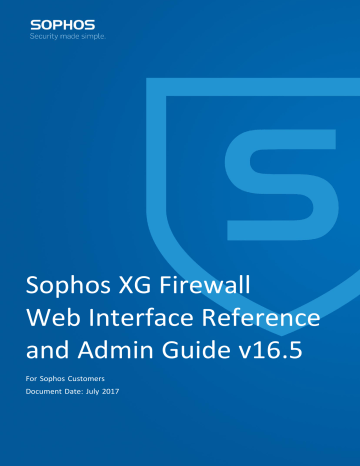| Configure | 353
Bytes Uploaded
Number of bytes uploaded (in KB).
Bytes Downloaded
Number of bytes downloaded (in KB).
Time Duration
Time period since Cellular WAN is connected.
Format: HH:MM::SS
Figure 348: Status of the cellular WAN Connection
IP Tunnels
An IP tunnel is an Internet protocol network communications path between two networks. It is used to encapsulate one network protocol as a carrier for another network protocol. It is often used by two separate networks having a router with different network addresses for communication. The device supports IPv6 tunneling. Hence, IPv6 packets can be encapsulated in IPv4 headers using the IP Tunnel feature.
This page provides a list of all configured IP tunnels. The administrator can create and manage IP tunnels from this page.
Add IP Tunnel
The Add IP Tunnel page allows you to create or edit an existing 6in4, 6to4, 6rd or 4in6 IP tunnel.
1. Go to Configure > Network > IP Tunnels and click Add.
2. Enter the tunnel details.
Tunnel Name
Enter a unique name to identify the tunnel.
Tunnel Type
Select the tunnel type from the available options.
Available Options:
• 6in4 – 6in4 uses tunneling to encapsulate IPv6 traffic over IPv4 links. This is used when IPv6 packets have to travel over IPv4 links with IPv6 networks at both endpoints..
• 6to4 – 6to4 allows encapsulation of an IPv6 packet in an IPv4 header to send it to an IPv4 destination. This is used when the local endpoint is an IPv6 host while the remote endpoint is an
IPv4 host.
• 6rd – 6rd is similar in implementation to the 6to4 tunnel. However, unlike 6to4, 6rd allows the administrator to use a native IPv6 prefix.
• 4in6 – 4in6 uses tunneling to encapsulate IPv4 traffic over configured IPv6 tunnels. This is used when IPv4 traffic is to be used in a pure IPv6 network.
6rd Prefix (available only if the tunnel type 6rd is selected)
Specify the native IPv6 prefix to be used for the tunnel.
Zone
Select the zone to create the tunnel for.
The tunnel is used for the traffic of the selected zone.
Available Options:
• LAN
• WAN
• DMZ
• WiFi
Local Endpoint
Specify the IP address of the local endpoint of the tunnel.
For:
• 6in4: Specify the IPv6 address of the local endpoint.
• 6to4: Specify the IPv6 address of the local endpoint.
• 6rd: Specify the IPv6 address of the local endpoint.
• 4in6: Specify the IPv4 address of the local endpoint.
Remote Endpoint (available only if the tunnel types 6in4 or 4in6 are selected)
Specify the IP address of the remote endpoint of the tunnel.
For
• 6in4: Specify the IPv4 address of the remote endpoint.
• 4in6: Specify the IPv6 address of the remote endpoint.
3. Enter the Advanced Settings.
TTL
Specify the time to live (TTL) life time for the data.
The attribute TTL defines a limit regarding the number of attempts to transmit an IP packet before discarding it.
Default: 0
Acceptable Range: 0 to 255
TOS
Specify the type of service (TOS) for the data.
The attribute TOS provides the value for an IP packet depending on the service which is provided.
The service mainly defines the packet priority, the type of route (latency, throughput, or reliable service).
Default: 0
Acceptable Range: 0 to 99
| Configure | 354

